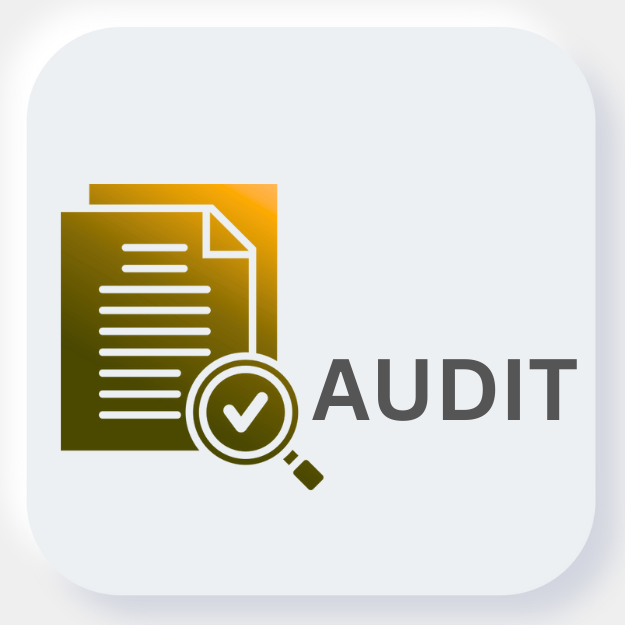
.png)












.png)










For anyone stepping into the world of auditing -whether as a CA student, a budding professional, or even
a
seasoned practitioner-statutory audits can feel both exciting and intimidating. They are a big
responsibility
because one small error can have massive implications.
But here’s the thing: most statutory
audit mistakes and statutory audit errors don’t come from a lack of
knowledge. Instead, they creep in when processes are rushed, assumptions go unchallenged, or simple
checks get
skipped.
So, if you’ve ever wondered about the common statutory audit mistakes that derail audits -and how to
avoid them
-you’re in the right place.
Picture this. You’re halfway through a client’s audit when you realize some disclosures were missed
because
nobody double-checked the risk assessment after the company expanded into a new business segment. Now
there are
gaps in your working papers, management is asking questions, and you’re scrambling for explanations.
Sounds familiar? These common statutory audit mistakes happen more often than you’d think. The good news
is, you
can easily prevent them if you know what to look for.
In this guide, we’ll talk about what are the most common statutory audit mistakes, why they occur, and
most
importantly, how to avoid errors in statutory audits with practical steps you can start using right
away.
After reviewing real-world cases and talking to professionals, here are five mistakes auditors keep repeating -and how you can make sure you’re not one of them.
One of the most frequent statutory audit process mistakes happens right at the start: the risk assessment is done once and then forgotten. Businesses change, transactions change, and sometimes even financial reporting risks evolve mid-audit. But auditors keep using the original thresholds as if nothing’s changed.
Why this hurts: When risk areas shift and you don’t catch it, you risk signing off on financials that aren’t fully tested. That’s a straight path to audit non-compliance issues.
How to fix it:
Auditors sometimes work tirelessly on testing but fail to document the journey properly. Missing signatures, vague notes, and scattered evidence weaken the audit file’s reliability.
Why this hurts: If regulators or peer reviewers ever inspect your file, gaps in documentation scream negligence. And if something goes wrong later, you have no defense.
How to fix it:
Some auditors accept management’s word on internal controls without really testing whether they work. Others test controls lightly and move on.
Why this hurts: Overreliance on untested controls is one of the biggest statutory audit errors out there. If controls are weak, the whole audit opinion stands on shaky ground.
How to fix it:
Auditors and clients often assume they’re on the same page about scope - until they realize they’re not. Some areas get tested twice while others fall through the cracks.
Why this hurts: Misunderstandings lead to common statutory audit mistakes like missed disclosures, delayed responses, or wasted audit hours on irrelevant areas.
How to fix it:
Rules evolve constantly - whether it’s accounting standards, audit guidelines, or legal requirements. Yet many auditors keep using last year’s templates without checking for updates.
Why this hurts: This is one of the main reasons statutory audit compliance fails. You can’t give a clean report if your audit doesn’t reflect the latest standards.
How to fix it:
Also read- Internal vs statutory audit.
Take this example:
An audit firm planned the entire engagement using last year’s risk assessment. Meanwhile, the client
switched to
a new ERP system, but no IT control testing was done. Several processes moved under different managers,
and
disclosures weren’t updated for the latest accounting amendments. When inspectors later reviewed the
file, they
flagged weak documentation, outdated disclosures, and insufficient control testing.
Most of this could’ve been prevented with a solid statutory audit checklist and a few mid-audit reviews.
Here’s what your checklist should cover to avoid common mistakes in statutory audit:
Statutory audits usually don’t fail because of one big blunder - it’s a mix of smaller issues piling up together. Outdated checklists, weak documentation, half-baked risk assessments, and poor communication… when all of these happen at once, the audit can easily go off track.
Some mistakes show up again and again - skipping risk reviews, overlooking internal control weaknesses, relying on outdated disclosures, not keeping documentation in order, and leaving the audit scope vague right from the start.
Stay updated with rules, record everything accurately, keep communication open, examine controls thoroughly, and refresh your statutory audit checklist every season.
Plan proactively, conduct timely reviews, keep learning continuously, and implement strong internal quality checks to make a real difference.
At the end of the day, avoiding statutory audit mistakes and statutory audit errors isn’t about working
extra
hours - it’s about getting the approach right. When your statutory audit checklist is always updated and
documentation habits are strong as well, you review risks regularly, and communication stays clear, most
common
statutory audit mistakes automatically stay out of the picture.
Keep learning, stay curious, and treat every audit as a chance to raise your own standards. The fewer
mistakes
you make, the more trust and confidence you’ll build in your work.
Checkout Our free Course - Company specific interview preparation.